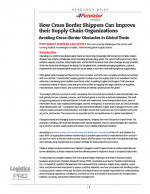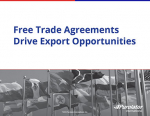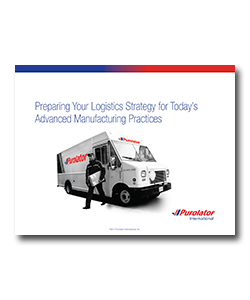Preparing Your Logistics Strategy for Today’s Advanced Manufacturing Practices
Manufacturers that have successfully transitioned to automated, highly-efficient processes certainly did not make these investments without giving careful thought to their supply chains and their ability to seamlessly move both supplies and finished goods.
A December 2016 segment on the CBS News program 60 Minutes examined the economic growth taking place in a region of Mississippi known as “the Golden Triangle,” with a specific emphasis on the role one man, economic developer Joe Max Higgins, has played in luring new manufacturers to the community.
As the segment made clear, several of those companies were returning manufacturing to the United States after originally locating in Asia.
“For some companies, offshore wasn’t as great as they thought it was or as it was portrayed to be,” Higgins said in the segment.
“Many of the companies said, ‘Hey if it’s gonna be consumed in the U.S., we can produce it in the U.S. cheaper and more efficiently than we can elsewhere and bring it in.’”
Mr. Higgins’s remarks reflect a nationwide trend, as a growing number of U.S. businesses recognize the viability of either keeping production in the United States in the first place or bringing it back from Asia or other overseas locations.
Research by Deloitte on behalf of The Manufacturing Institute found nearly half of U.S. manufacturing companies surveyed would consider reshoring at least part of their operations by 2020. Top reasons for returning operations to the United States include:
- Favorable logistics and supply chains in the United States – 90 percent
- Diminishing cost structure differential – 87 percent
- Increase in domestic demand – 80 percent
This inclination toward reshoring reflects an overall upswing in U.S. manufacturing. U.S. manufacturers produced roughly $6.2 trillion worth of goods during 2015, which amounted to about 36 percent of total U.S. gross domestic product.
As MarketWatch reported, that output is nearly double the level of any other leading sector, including professional and business services, government, and real estate.
What’s Related




Favorites





